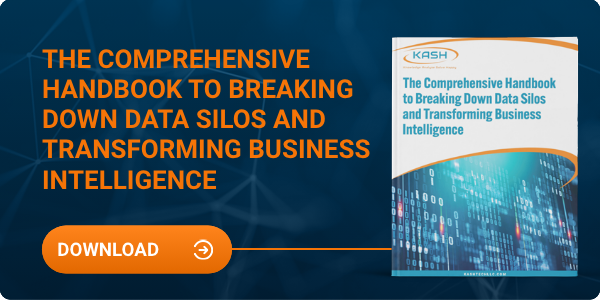How the Cloud Can Help You with Information Management (IM) Challenges
Topic:
Data Silos
Businesses run on technology. Every business transaction, from inventory management to post-sales marketing, creates data that must be managed to prevent the loss of its value—and contribute to the goals of becoming a data-driven organization.
The “words of art” here are information management (or IM). Technopedia defines the term as “the process of collecting, storing, managing, and maintaining information in all its forms.”
As information management evolved from Rolodex and IBM punch cards, IM has come to encompass the various data management technologies within the company. Like most software, traditionally, these technologies existed on-premise on the user’s desktop and later in the IT data center.
Over time, the number of assets, servers, software tools, applications, and data has grown exponentially, and the costs of the hardware, software and people resources have become cost prohibitive.
The Pandemic Made Matters Worse
The COVID-19 pandemic forced many organizations to transition to remote work, which has become the new normal. Remote workers need access to company data via the internet, in turn creating big IM challenges for the company, not the least of which was the exponential growth in the volume and velocity of data flowing into the organization.
All that “big data” and the need to manage it contributed to the momentum of relegating IM to the cloud.
About this Post
This post highlights how cloud information management systems can help companies deal with data management challenges. The cloud provides central access to all information management components, increases visibility and scalability, and reduces the costs of collecting, storing, and using the data.
We will also describe the use cases of cloud information management. Your decision to adopt cloud IM solutions for your enterprise can be based on three key points:
- cost optimization
- managing the growth of data silos
- improving data quality
Cloud Information Management Systems Lower the Total Cost of Ownership (TCO)
Instead of running on-premise systems and servers on a 24/7 basis and the personnel to operate them, using the Cloud lowers the Total Cost of Ownership (TCO). The cloud shifts IT expenditures from a capital expense (CapEx) to an operating expense (OpEx).
For example, the cloud can significantly reduce the upfront license fees in hardware and software, resulting in substantial money savings in the short and long run. Likewise, infrastructure and maintenance costs are shifted to providers, who can scale their offerings based on their customers’ needs.
Managing the Growth of Data Silos
Cloud-based information management facilitates moving from fragmented data silos to a centralized, comprehensive data store in the cloud. A Cloud data platform can serve as a single repository that everyone in the organization has access to, with the added advantage of centralized security controls and data governance.
The cloud is “location agnostic.” As a result, your system is less susceptible to server crashes and other interruptions. Users get all their data processed with a centralized, easy-to-manage platform.
Read more on how to break down data silos in our Comprehensive Handbook “Breaking Down Data Silos & Transforming Business Intelligence.”
Improving Data Quality
When you build out your cloud infrastructure, you build in new automated data pipelines. That process can filter out data accuracy problems like duplicate files and outdated versions of the data. In addition, those pipelines have built-in features to eliminate bad data that adversely impact analytical processing, such as reporting, advanced analytics, machine learning, and more.
A Strategy for Leveraging Information Management in the Cloud
The advantages of cloud-based information management systems provide convincing evidence of why moving IM to the cloud is the best path to digital transformation. But, as the saying goes, nothing worth doing is simple. Likewise, implementation can be more complex with IM than buying tools or subscribing to a cloud service.
As with most strategic IT decisions, companies must design a long-term IM strategy that aligns with the needs and goals of the organization. Your new cloud IM strategy should address many important factors, such as:
- The business goals of your organization (both short- and long-term)-- i.e., the specific objectives that you aim to achieve
over a given period of time, aligned with your organization and mission - The data needed to support these goals—e.g. sales and customer data, financial and marketing information, and how
that data needs to be scrubbed, curated, and governed - Business security and privacy requirements—compliance with HIPAA, etc.
- Designating who will have access to the data along with their roles—the most critical component of information security
management - Designing the “new” processes for collecting, extracting, cleansing, transforming, and analyzing the data.
- The need for a data migration plan for all of your critical business data to a single or multi-cloud or hybrid
environment—depending on the need for the protection of proprietary data - Archiving data plans and policies—e.g., long- or short-term retention as required by statute with timelines and schedules
So, your Cloud IM journey requires choosing the right platform. The choice involves the right tools, best policies, and partnerships to help you balance this initiative with other business and IT priorities.
Conclusion
The benefits of moving to the Cloud are well documented. IM in the cloud enables easier access to data and associated analytics, lower infrastructure support and maintenance costs, and improved protection from cybersecurity risks. This allows organizations to increase new products and services faster and implement changes at speed in the face of all that valuable data.
In the end, effectively managing all of your valuable enterprise data can:
- give your organization the insights that drive good decision-making
- improve customer satisfaction
- enhance your operational efficiency
- achieve your strategic objectives
In short, leveraging IM to the cloud is another piece of the puzzle of successfully developing a data-driven culture within your organization.
Learn how data silos inhibit successful business intelligence strategies and get in the way of developing data-driven cultures. Download the eBook, The Comprehensive Handbook to Breaking Down Data Silos & Transforming Business Intelligence.
